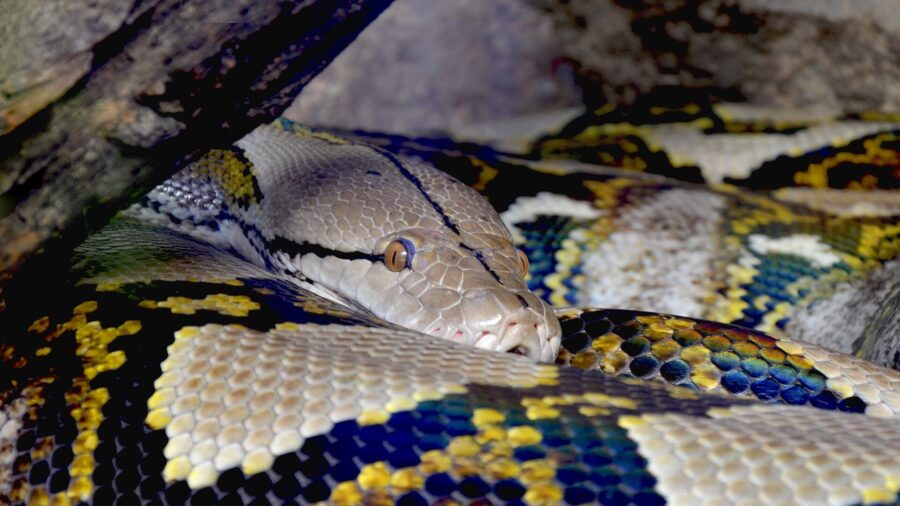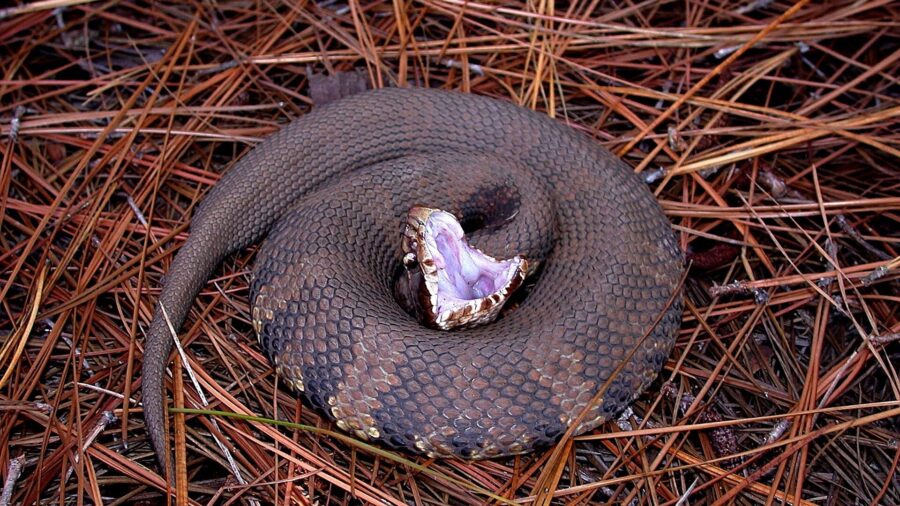Highly Venomous Snake Caught In A Fishing Net, See The Daring Rescue Attempt
This article is more than 2 years old

How do you catch a snake that’s already been caught? That’s a problem that residents in Mangalpur, in the Puri district of Odisha, recently had to deal with.
A new video has emerged from the Times of India showing a group of villagers figuring out what to do with a highly venomous snake that was discovered hopelessly tangled in a nearby fishing net. The video opens with the man, who is clearly the bravest person in the entire country, approaching the venomous snake while wearing shorts and up to his ankles in water to retrieve it and the net it was stuck in.
UPI notes that the man was actually an animal researcher who was called by local residents to help deal with the snake after fishermen found it in their net placed to catch fish in a rice field. That would explain why he has the long metal hook that people brave enough to work with snakes always seem to use. Thanks to a combination of the hook and the net, he’s able to safely walk it out of the rice field and onto the road where several onlookers are patiently standing at a safe distance to see who won the encounter.
Here’s the wild part — the man places the snake on the road deeming it not to be a threat while tangled in the net. He then puts on his heavy boots. That’s right, he elected to go retrieve the snake barefoot. Look, I get that no one wants to ruin their shoes by going into the water with them, but let’s have some perspective, one wrong move and he’s got himself a snake bite that could land him in the hospital or morgue.
Indeed, banded krait snakes, easily identifiable in this case by their distinct black and yellow stripe pattern, are among the most highly venomous snakes in all of Asia. A single bite injects quite a bit of venom into its prey, which can cause paralysis, vomiting and, in particularly severe cases, respiratory failure that requires intubation and ventilation. According to its toxicology report, antivenom can help prevent further paralysis, but it’s unlikely to reverse established paralysis. So, if you’re approaching a banded krait snake… Keep the boots on!
Fortunately, the nocturnal banded krait isn’t combative by nature, especially in the daytime. Rather than throw down with a human being, it is much more likely to curl up and hide. However, if you’re afraid of snakes, that may be your go-to defense as well, in which case we’re looking at quite the stalemate, aren’t we? While it certainly gave the people of the village a fright, banded kraits are local to that part of India and the conditions in that particular area were perfect for attracting that kind of snake.

Thai National Parks notes that banded kraits tend to open countrysides in agricultural lands, much like the rice field it was found in. While their main prey is other snakes, they’re known to subside on rodents and fish, which often attracts them to fishing villages. Although they can move fast on land, they’re also known to be attracted to water, which explains how this particular one made its way into a fishing net. Fortunately, the story has a happy ending all around. After capturing the snake and somehow untangling it, animal researchers took it far away from the village into a suitable habitat where it was set free.











